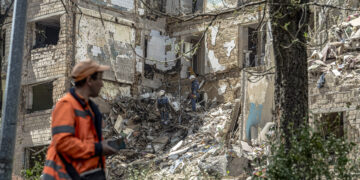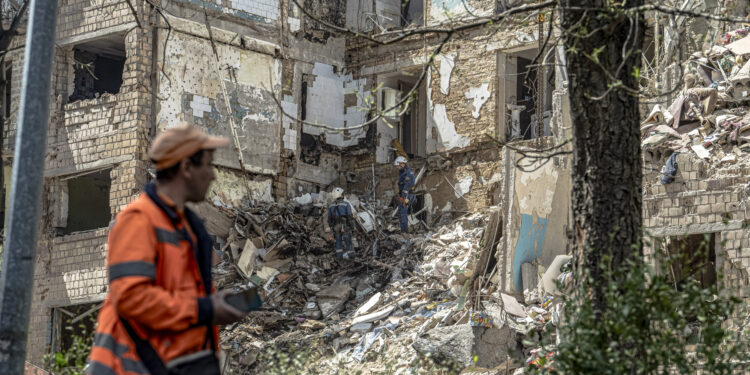Login to Continue Learning
Russia has introduced a new guided glide bomb into its ongoing invasion of Ukraine, marking Moscow’s push to develop aerial weapons for targeting Ukrainian infrastructure. According to Ukrainian authorities, Russia’s UMPB-5 guided aerial bombs were dropped by Sukhoi Su-34 fighter jets on two regions in the last two months.
The Foundation for Defense of Democracies (FDD), a Washington, D.C., think tank, analyzed that the glide bomb is part of Russia’s efforts to develop cheap standoff guided munitions. Newsweek has reached out to the Russian Defense Ministry for comment.
Before Vladimir Putin’s full-scale invasion, Moscow underestimated the number of glide bombs and other guided munitions it would need. Prior to the war, Russia’s glide bombs were relatively expensive and used sparingly. However, Russia’s failure to destroy Ukraine’s air defenses at the outset of the invasion pushed Moscow to quickly develop cheap glide bombs with standoff range.
Ukrainian authorities stated that the UMPB-5 was first deployed in Sumy on June 23 and then on consecutive days targeting Kharkiv on July 24 and 25, including an attack on a hospital. In one instance, a Su-34 released the bomb about 65 miles away from Russia’s neighboring Belgorod region, according to Spartak Borysenko from the Kharkiv Prosecutor’s Office.
Borysenko noted that Russia is still testing the weapon and its exact characteristics are not fully known. The name UMPB-5 suggests it is a derivative of the UMPB D-30SN, which was first seen in spring 2024. This model has a longer range (60 miles) than its predecessor’s 50-mile range and a warhead that weighs about 550 pounds.
Cheap glide bombs are playing an increasingly significant role in Russia’s aggression against Ukraine. An average of 160 were dropped each day in July 2025, according to Ukrainian President Volodymyr Zelensky—eight times more than in spring 2023. The main model used is the UMPK (Universal Gliding and Correction Module), first seen in January 2023.
Borysenko reported that Moscow began using a modified UMPK with larger wings and at least 60-mile range in Sumy and Kharkiv from May, as suggested by a Russian Telegram channel. Additionally, Russia is developing low-cost air-launched cruise missiles like the recently unveiled S8000 BanderoL.
John Hardie, deputy director of FDD’s Russia Program, stated that these new munitions are more powerful derivatives reflecting the Russian Air Force’s efforts to develop various cheap standoff guided munitions. Spartak Borysenko from Kharkiv’s Prosecutor’s Office said the UMPB-5 is a new ammunition introduced about two months ago, currently being tested with uncertain exact characteristics.
Hardie noted that details about these new munitions remain scarce but Russia’s Air Force and Naval Aviation are focusing on producing large quantities of inexpensive standoff munitions. Addressing shortcomings in destroying enemy air defenses will be more challenging to solve.
📚 Reading Comprehension Quiz
According to the passage, which of the following best describes Russia's use of glide bombs during its invasion of Ukraine?
Please login or register to take the quiz and earn points!



















